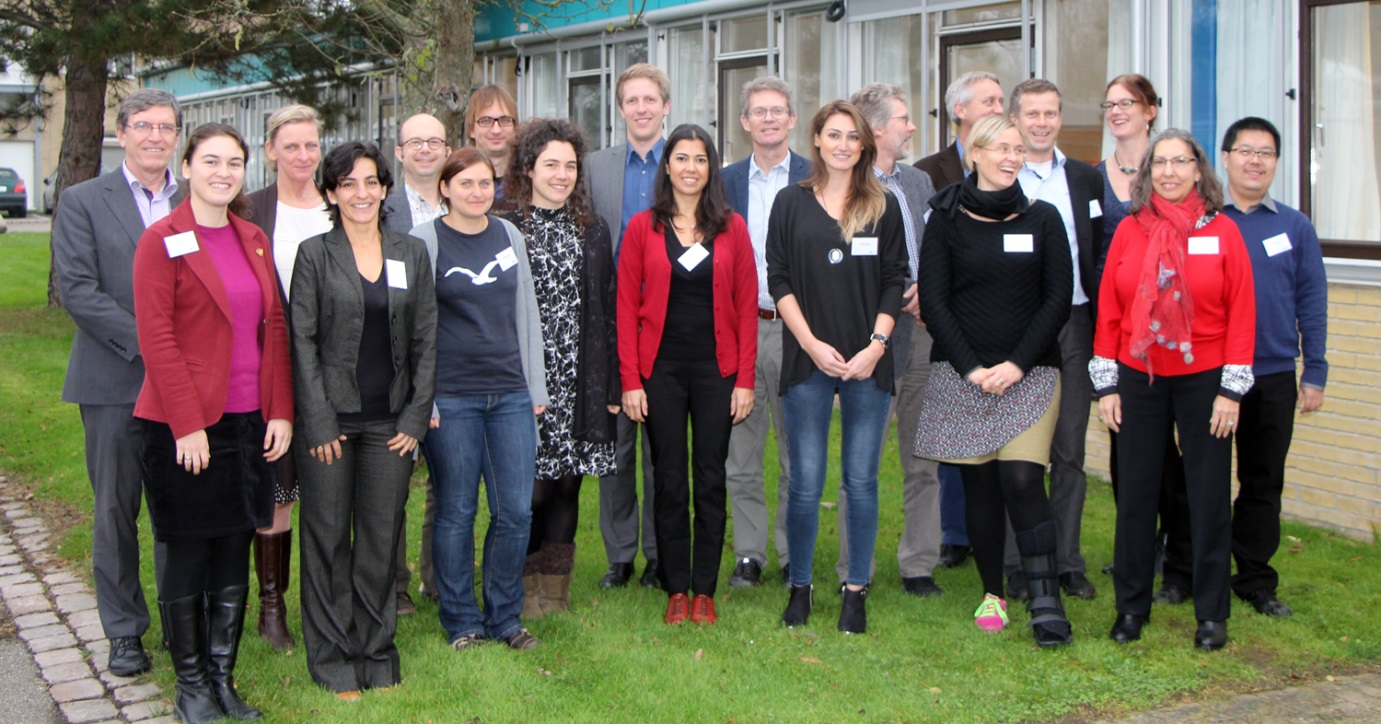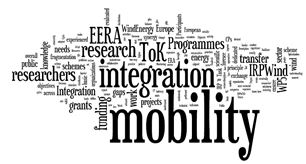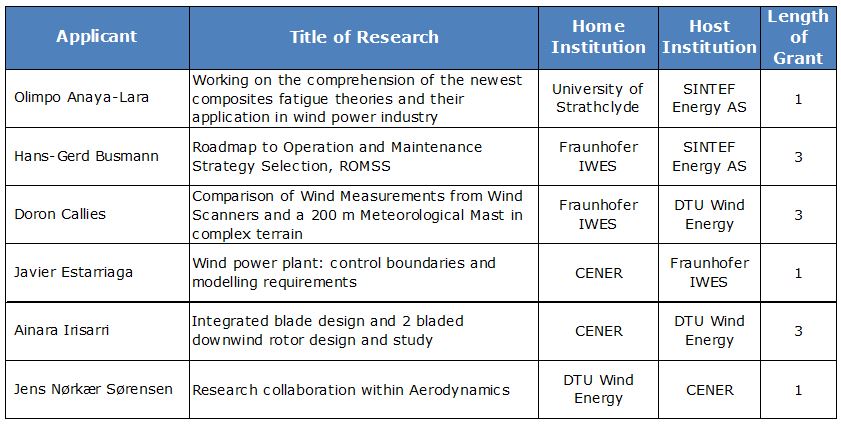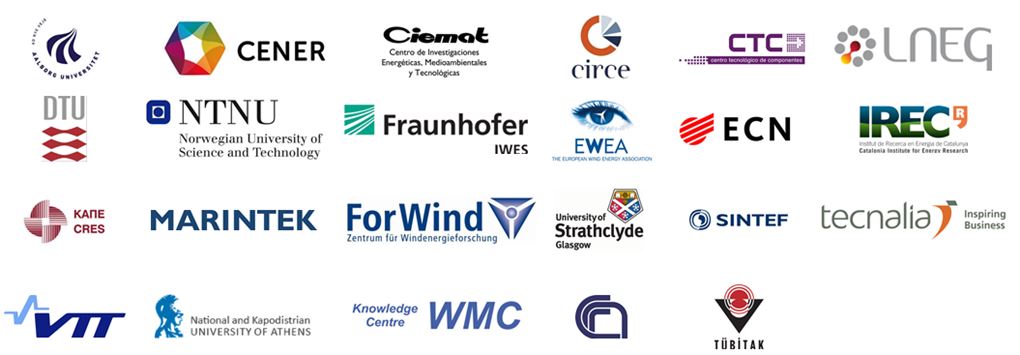This is the second bi-annual newsletter for the EERA Joint Programme on Wind Energy (EERA JPWind) after EERA JPWind has successfully acquired the EU funded IRPWind project.
Feel free to distribute the newsletter among your colleagues and friends!

1. Introduction by the coordinator of the EERA JPWind
IRPWIND officially started on 1 March 2014. The IRPWIND is about aligning and accelerating the research effort done by the research organizations in Europe. In IRPWIND integration, coordination and alignment are essential elements of the programme besides the 3 R&D core projects dealing with offshore wind farms, structural reliability and European-scale wind farm cluster control. The research activities have been already initiated.
The first IRPWind conference was carried out on 25-26 September 2014. In Amsterdam approximately 120 people were gathered to discuss and disseminate results from EERA projects as well as to intensify contacts between EERA members. The conference comprised both parallel sessions at sub-programme level as well as plenary talks from the IRPWIND coordinator and from European Commission and industry representatives. Several technical and collaborative gaps, currently hampering the next generation of wind energy technologies, were discussed. During a closing plenary discussion, it was emphasized what IRPWIND would like to achieve during the next 4 years at European level and how we can improve the collaboration between the research communities and industry as well as how IRPWind will promote international collaboration.
Another achievement during the first 9 months has been the first IRPWIND mobility call. 6 applications have been evaluated and the first travels have already taken place. The mobility scheme within the IRPWIND shall ensure an efficient implementation of the research activities in IRPWIND and in other EERA JP WIND Sub Programmes. The aim is that the IRPWIND mobility programme shall facilitate the cooperation between EERA research organizations and the broad scientific community to fill gaps in the European wind energy sector. The next IRPWIND mobility call is expected to be launched at the beginning of 2015.
In IRPWIND, we are looking forward to the challenges and tasks to come. In 2015 we will primarily focus our coordination and supporting activities on open access, national alignment and industry involvement. We are ready to take the next steps towards more alignment and coordination with the mission of running a “virtual research centre” and further evolve a common European Research Area for wind energy research in Europe.
At our steering committee meeting in September a new EERA JP Wind sub-programme on social and economic aspects was approved. The new sub-programme takes a holistic approach on socio-economics in the wind energy sector including system integration, power markets, economic incentives, component and system costs, environmental issues including life cycle assessment and public engagement. By adding a new sub-programme, EERA JP Wind is now engaged in a field also prioritized in the Integrated Roadmap for the SET Plan. In IRPWIND we have great expectations to the new sub-programme and welcome the aim of supporting other sub-programmes by adding economic and social perspectives into the analysis.
Project proposals for the first Horizon 2020 calls are currently under evaluation, including 10 EERA Wind initiated projects. We are looking forward to the publication of the proposal evaluation. Find more information about these proposals in this 2nd edition of the IRPWIND biannual newsletter.
I hope you enjoy the reading!
Peter Hauge Madsen, DTU

2. EERA news
New Management Board for EERA JP WIND 2014-2018
The EERA WIND Management Board has been up for election in 2014. Following group of candidates will compose the JPWE Management Board for 2014-2018:
Hans Ejsing Jørgesen (DTU), SP wind conditions
Peter Eecen (ECN), SP Aerodynamics
Denja Lekou (CRES), SP structural design and materials
Felix Avia (CENER), SP Research Infrastructures
Kurt Rohrig (Fraunhofer IWES), SP grid integration
John Tande (SINTEF), SP offshore wind
Poul Erik Morthorst (DTU Management & Engineering)

EERA Wind Horizon 2020 proposals under final evaluation

EERA WIND has submitted 5 proposals for the Horizon 2020 Work Programme 2014. All 5 proposals went through stage 1 and have been invited to send in a full proposal for stage 2. Congratulations to the partners involved! Titles and PPC for the proposals are listed below:
- “Advanced control and operation of wind power plants” (PPC: Nicolaos A. Cutululis, DTU)
- ”All under control" (PPC: Arno van Wingerde, Fraunhofer IWES)
- "Cost-effective offshore wind substructures for water depths beyond 50 meters" (PPC: Ole David Økland, MARINTEK)
- "Life cycle cost reduction of future innovative support structures for offshore wind turbines". (PPC: Raimund Rolfes, ForWind-Hannover)
NMP:
- "Multiscale modeling of composite materials for wind turbine blades" (PPC: Denja Lekou, CRES)
The final evaluation is expected to be announced during December 2015. Another 5 EERA Wind initiated proposals have been submitted for Work Programme 2015 of Horizon 2020. 4 proposals are offshore related. The fifth proposal is a combined JP Wind/JP Ocean proposal addressing the Horizon 2020 INFRAIA call.

EERA JP-Wind Workshop on "Metals in Wind Turbines - Challenges & Ideas"
Aiming to accelerate discussions on aligning short and long term R&D on metallic materials for wind energy applications within the frame of EERA JP-Wind a Workshop on "Metals in Wind Turbines - Challenges & Ideas" was organized and held at DTU Wind Energy in Roskilde on the 19th of November 2014. More than 30 researchers representing more than 15 research groups from 9 countries participated and discussed thematics relevant to metallic materials in wind turbines. 12 presentations of the specialized capacities and expertize of the EERA partners in the field revealed the complementarity of the groups and opportunities for collaboration. The key note speeches from invited industrial partners stimulated the discussions. The workshop concluded with suggestions for joint activities in topics of high priority.

EERA DeepWind 2015 Deep Sea Offshore Wind R&D Conference

EERA DeepWind'2015 Deep Sea Offshore Wind R&D Conference, Trondheim, 4 - 6 February 2015, aims at presenting the best on-going R&D on deep sea offshore wind farms, both bottom fixed and floating. The conference is compact with max 200 participants and with a good collegial atmosphere. Approximately 100 abstracts for scientific presentations have been received from EERA JP Wind partners, and the detailed programme is now being prepared with a mix of plenary presentations with broad appeal and presentations in parallel sessions and posters on specific science and technology themes.
These include:
a) New turbine and generator technology,
b) Grid connection and power system integration,
c) Met-ocean conditions,
d) Operation & maintenance,
e) Installation and sub-structures,
f) Wind farm optimization,
g) Experimental testing and validation,
h) Socio-economic issues.
More info and registration on Deepwind 2015. Deadline for registration is 15 January 2015.

NSON - A possible pathway towards deployment of a North Sea Offshore Network
Following the European Strategic Energy Technology Plan’s (SET-Plan) core idea of making low-carbon technologies affordable and competitive the herein introduced NSON answers the need for specific European co-operation research and demonstration projects taking up new energy technologies. Hence, the scientific research and demonstration regarding the proposed NSON is also in line with the vision of the EERA Joint Programme on Wind Energy and Smart Grids targeting a transformation of the energy supply system by, among other means, a sustainable and well-coordinated grid extension and expansion on the European level.
Several studies support that a common undertaking, with shared costs among the different stakeholders over a long timeframe, will be considerably cheaper than a case by case approach. The overall cost will be minimized and future industrial initiatives in the region (such as more wind, ocean energy, oil and gas) would see a relatively lower marginal integration cost. All countries are making substantial effort to address these issues at a national level. NSON will keep the national starting point and enhance it with joint European planning. This includes sharing of work and results by establishing a Berlin model project platform.
Proposed at a German SET-Plan conference in Berlin in March 2012, the Berlin model suggests a variable geometry, bottom-up approach to organizing large RD&D as an alternative to the existing instruments to allow a few especially motivated countries with a strong common interest to take on a research/innovation challenge as a coordinated effort with a minimum of "red tape". The program/project should be a well-coordinated effort involving the best research teams and industry from the respective countries and (at least as a starting point) with the countries funding their own research actors. A reward in terms of top funding could be imagined from the EU if the effort is on the EU’s list of priorities.
The three initiating parties were Fraunhofer IWES (Germany), SINTEF Energy (Norway) and University of Strathclyde (UK). The Technical University of Denmark (DTU, Denmark), ECN (Netherlands) and University College Dublin (UCD, Ireland) joined in 2014. Other North Sea countries are encouraged and welcome to seek participation. The partners already have a track record of working closely together in the EERA JPs Wind and Smart Grids on aligning national R&D efforts under the same strategy. NSON will be essential in taking these efforts to the next level in order to further integrate efforts and resources.

3. EERA Sub-Programme (SP) news
A new sub-programme on Economic and Social aspects of Wind Integration was launched in October 2014. The new sub-programme will explore the major economic and social challenges for wind energy now and in the future and will investigate how they can be addressed and mitigated.
The sub-programme was approved by the EERA Wind steering committee in September '14. From the launch there has been very good support to the new sub-programme.
The official kick-off meeting of the sub-programme was held at DTU Management Engineering in Roskilde (Denmark) in November 2014 with 22 participants from 14 different EERA Wind member institutions. 
Photo: Kick-off meeting with 22 participants from 14 different EERA Wind member institutions in November 2014.
The objectives of the sub-programme are to explore major economic and social challenges for wind energy and to investigate how they can be addressed and mitigated. In addition, research activities will be aligned in the area of economic and social aspects of wind integration to lay a scientific foundation for the long term cost-effective development of wind energy and its successful deployment in energy systems.
This will be done by:
1. Supporting other sub-programmes by adding economic and social perspectives into the analysis. This includes aspects relating to society, technology, environmental and economic challenges of wind integration.
2. Independent research activities.
Within the sub-programme six core Research Themes (RT) have been identified:
- RT1: Component and system costs of wind energy
- RT2: Economic incentives and support mechanisms for wind energy
- RT3: Adapting power markets for wind energy
- RT4: Economics of integration of wind into energy systems
- RT5: Externalities and environmental issues of wind energy including Life Cycle Assessment (LCA)
- RT6: Public engagement strategies for wind energy and planning
Of these six RT's organisation of work in RT2, RT4 and RT6 has already started and RT1 will follow in spring 2015. Organisation of work in the remaining RT's will start up during 2015.
All EERA Wind members are welcome to contribute to the sub-programme. For more information and to show expression of interest in the RT's please send an e-mail to Klaus Skytte.

On the SP meeting in Amsterdam, the group nominated scientific responsibilities for the Research Themes (RT):
1. Wind power plant capabilities (UoS, Olimpo Anaya-Lara)
2. Grid planning and operation (DTU, Poul Ejnar Sørensen)
3. Power & energy management (SINTEF, Leif Warland)
Furthermore, the SP has a new deputy SPC, Michael Durstewitz from IWES. The new core-team will start the process to further develop the major documents of our SP (wind strategy, DOW, roadmap).

Workshop on Ancillary Services and System Stability KASSEL, December 1st- 2nd, 2014
Current situation: Maintaining static and dynamic security represents one of the major concerns regarding the reliable operation of power systems. As such, this issue is receiving renewed interest due to the recent and conceivable future occurrences of frequency and voltage stability and control issues in both steady state and following large disturbances.
We observe an increasing risk due to insufficient balancing and voltage control capabilities of the network. These gaps are the consequences of higher capacities as well as fluctuating and reversal load flow caused by renewable energy sources (RES) and market integration issues. It underscores the urgent need for new control and optimized planning procedures in order to continuously achieve an optimized operational performance of the network.
In light of this situation the market-induced displacement of conventional generation puts a particular focus to a more active and proactive participation of wind power plants (WPP) and other RES to the provision of ancillary services.
Workshop outcome: About 20 scientists met at Fraunhofer IWES for a workshop focusing on "Ancillary Services and System Stability". They taught, learned and discussed about technological opportunities, administrative barriers and knowledge gaps of integrating the intrinsic capabilities of wind power plants to provide ancillary services. From a technical point of view ancillary services are the properties of power systems to contribute to voltage and frequency control in electricity supply systems. Market issues are of interest as well. One key message of the workshop is: a great potential of ancillary services is already virtually available in state-of-the-art wind power plants. However, this potential is not visible and therefore not accessible to the system operators causing frequent and costly dispatching measures.
For more information, please contact EERA-JPW
Kurt Rohrig, SP-Coordinator
Michael Durstewitz, Deputy Coordinator

4. IRPWIND news

The first round of call for applications for the Mobility activity, with deadline on August 30 2014, ended with six applications received and granted.
Three scientists are already “mobilised”. The first scientist to start the grant on October 13th hosted by IWES is Javier Estarriaga from CENER. The first female scientist grabbing this opportunity is Ainara Irisarri from CENER, who just started on November 1st at DTU Wind Energy for a period of three months. We hope that many more will follow.
The application and evaluation processes went smooth and fast considering that it was the first call. This was possible thanks to the effective collaboration between the Mobility team from CNR and DTU and the ten evaluators involved in the process. The table below summarizes the applications (please note that the length of the grant is expressed in months)

Many colleagues have expressed their interest in applying for a mobility grant but the general attitude has been to postpone the submission of a proposal until a coming call. Next call is planned at the beginning of January 2015, so we hope that many will take the decision to apply in the new year when, as they say, “Out with the old, in with the new” (opportunities)!
The second call is planned for January 2015. Further calls are planned for June 2015, January 2016 and January 2017.
Applications can be submitted online using a template available on the IRPWIND website where you can find further information and FAQs.
Anna Maria Sempreviva, DTU

For a successful integration of wind energy into the European electricity system, data play a major role. To support the transition of the power supply system in the future, new data types as well as new data sharing policies are needed.
In order to gather useful information, a questionnaire has been created and circulated amongst wind energy and power system stakeholders in several European countries as part of a survey on the current use of data for wind power integration. This survey aims at collecting information about: a) which data are currently used, b) how the data situation is valued by the stakeholders and c) which data might support the integration of wind energy in the future. The survey uses a questionnaire that has been set up and distributed amongst wind energy and power system stakeholders in several European countries. Answers are currently collected. Results of the survey will be summarized in a specification catalogue, which will serve as a basis for future data requirements for wind power forecast and integration.
Bruno Schyska

5. Suggestions and feedback?
If you have any topic suggestions for the next newsletter, or if you have ideas on how to improve it, feel free to send your input to Martijn Van Roermund.
You can subscribe and unsubscribe at the IRPWIND webpage.
